Ancient mysteries refer to a multitude of events, artifacts, and enigmatic questions that baffle and captivate scientists and scholars alike. From the Nazca Lines, the Plain of Jars, and Stonehenge to the Antikythera Mechanism, the past is filled with unsolved mysteries. These strange objects and artifacts from lost ancient civilizations continue to capture our imaginations while evading explanation.
Table of Contents
1. The Nazca Lines
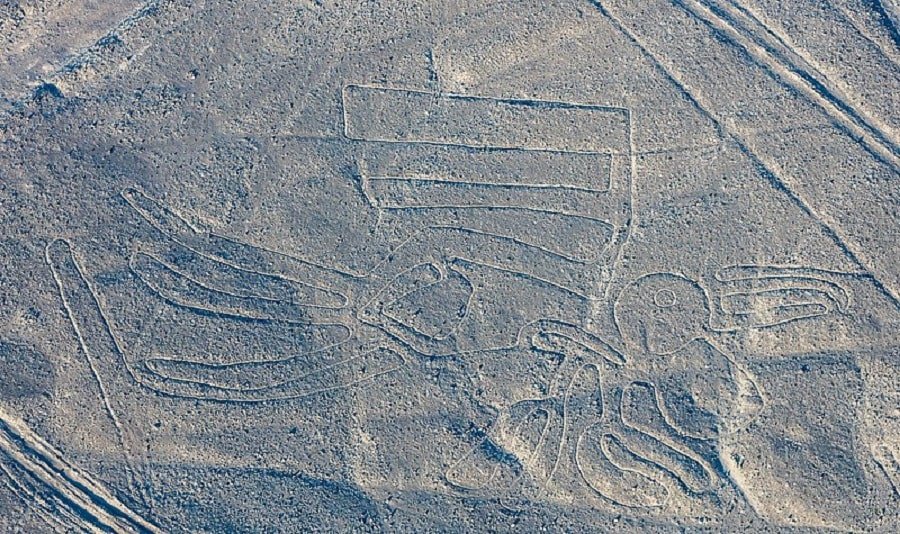
The Nazca lines are a series of large drawings etched into the ground in Peru 2,000 years ago, created by the Nazca civilization. The Nazca Lines remained widely unknown until a plane flying over the desert of southern Peru spotted them.
There are over 300 geoglyphs depicting various things, such as animals, plants, geometric shapes, and humanoid figures. When saying the Nazca lines are large, that is a slight understatement as some of the images measure 1,200 ft long.
Although it is generally accepted that the geoglyphs were carved by the ancient Nazca culture, some of the more eccentric theories center around the idea that the lines were not created by humans at all, but by aliens.
Anthropologists believe that the majority of the ancient geoglyphs were created by the ancient Nazca civilization which developed from 100 BC and thrived until 700 CE. Although, they suspect some of the images may be even older dating to Paracas and Chavin cultures.
It remains unclear why the ancient Nazca carved these patterns into the desert plains. There are several hypotheses about why they did it ranging from water rituals, to being a sacred pathway, but the reason remains unexplained.
READ MORE: Ancient Civilizations Timeline: The Complete List from Aboriginals to Incans
2. The Voynich Manuscript

The Voynich Manuscript is one of the more baffling ancient mysteries on this list. It is a late-medieval manuscript filled with illustrations of species of plants that don’t exist, written in a language or code that appears equally fictitious. Supposedly, the codex was uncovered in southern Europe, hidden away in a castle.
The medieval mystery was acquired by a rare book dealer called Wilfrid Voynich in 1912. The book is handwritten and was written in the 15th century, which we know thanks to carbon dating.
Experts have deduced that it may have been composed in Italy, based on similarities to other works from the Renaissance period, but its origins remain unknown.
The ancient text has been studied by experts throughout the years, none have been able to to unravel the mystery of the Voynich Manuscript, nor provide new insights. Perhaps the most notable person to attempt to decipher the ancient text is Alan Turing, who cracked the Nazi’s code during World War II.
There are several theories as to what the book is. Some believe the codex is filled with ciphers or is written in an extinct language, some even believe the book is an elaborate hoax. Whatever the case is, the Voynich Manuscript remains one of the most intriguing ancient mysteries to this day.
3. The Plain of Jars
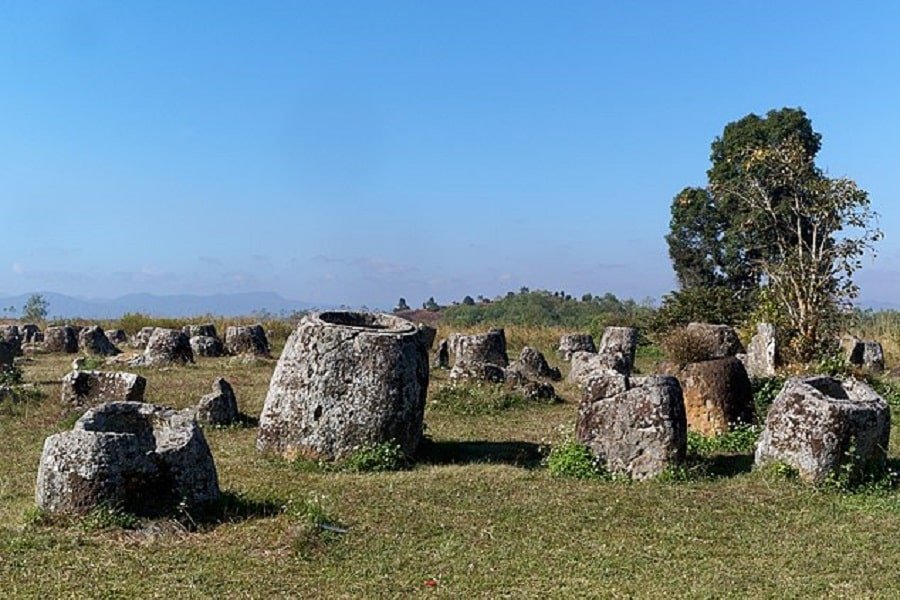
The Plain of Jars is an Iron Age site in Laos that holds thousands of stone jars which, according to legend, were left there by giants. The sandstone jars, some of which measure 10ft tall, are undecorated, save for one. The only decorated jar depicts the human ‘frogman’ image.
The jars are often found alone, or grouped and are believed to have had lids at one time. Despite the legend told by the locals claiming the stone jars are the discarded wine glasses of the giants, archeologists believe the jars relate to Iron Age burial rituals.
Human remains have been found at the site to corroborate the theory that the jars served as urns. However, how they were moved into place, and exactly what purpose they served remain a mystery to researchers, as do the people who placed them there.
4. Stonehenge

Stonehenge is one of the world’s most iconic pre-historic structures and one of its oldest ancient mysteries. What archaeologists do know about the prehistoric monument found in England, is that it took roughly 1,500 years to construct.
READ MORE: Prehistory: Paleolithic, Mesolithic, Neolithic Periods, and More
The Neolithic monument consists of 100 stone slabs, standing upright in a circle, and was built using primitive tools in a time that predates the invention of the wheel.
The reason why Stonehenge was built has puzzled archaeologists for decades. Most researchers believe that it was built for burials and that it must have been an extremely important site to the ancient people of Britain. Some of the stones used are from Wales, meaning they were transported over 200 miles to the site.
5. Thonis-Heracleion
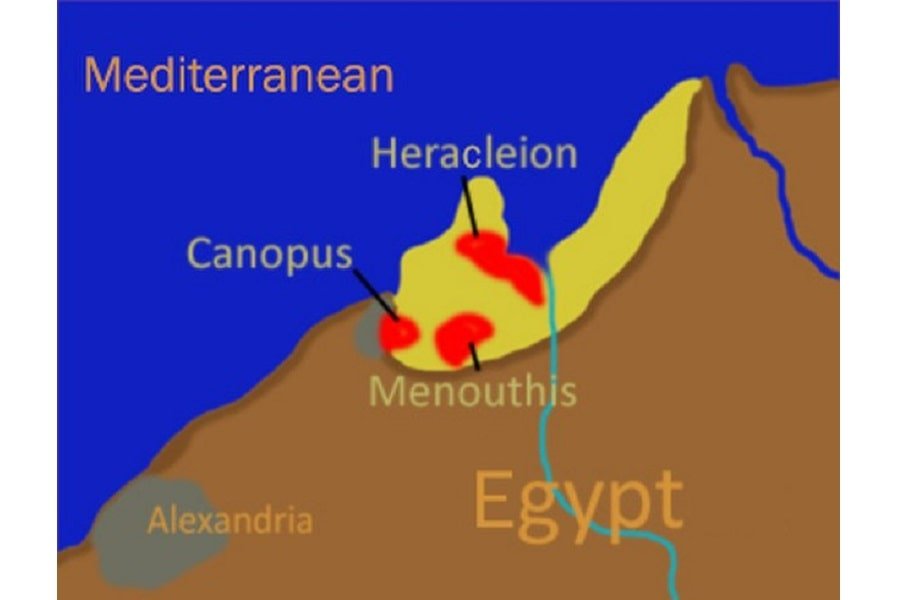
Thonis-Heracleion was once a thriving Egyptian port city situated on the Mediterranean Sea, serving as a major trade hub until the second century BCE. Known to the Greeks as Thonis, the ancient Egyptian port city was said to have been visited by the mythical Greek hero Hercules, and the beautiful Helen of Troy which seemingly disappeared from history.
In the second century, BCE Thonis-Heracleion the center of the city disappeared into the Mediterranean Sea, the rest following over time. The remains of the lost Egyptian city were only rediscovered in the early 2000s. It is unclear exactly why the city collapsed into the sea, due to soil liquidation, but it was most likely triggered by earthquakes, tsunamis, and floods.
This once bustling trade center lay covered in silt and sand for thousands of years until marine archeologists uncovered its secrets. The underwater Egyptian city contained animal sarcophagi, coins, jewelry, pottery shards, the ruins of temples and large statues of ancient Egyptian gods have been found.
Thonis-Heracleion offers us new insights into ancient Egypt, and with only 95% of the site having been investigated, who knows what new investigations will uncover.
6. Yonaguni Monument
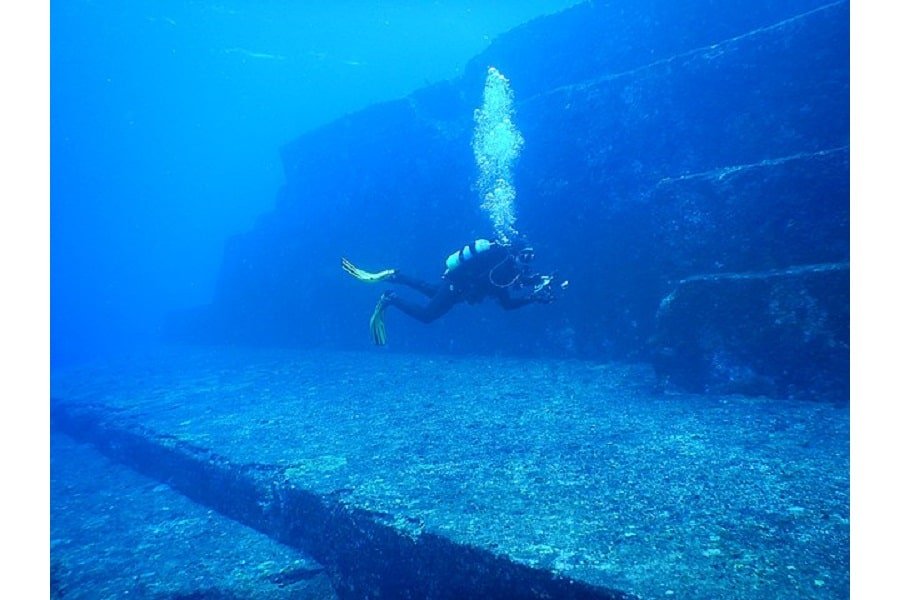
The Yonaguni Monument located on the sea floor off the coast of Japan, is perhaps one of the most perplexing historical mysteries. The monument, which is sometimes referred to as the Atlantis of the Pacific, is a large rock formation resembling a man-made step pyramid.
Discovered in the 1980s, the large rock formation consists of straight lines and right angles, prompting many to believe that the structure is in fact manmade. Several researchers believe that the pyramid could be evidence of a lost civilization, while others state it is a natural formation. Albeit, a weird one.
7. Cleopatra’s Tomb
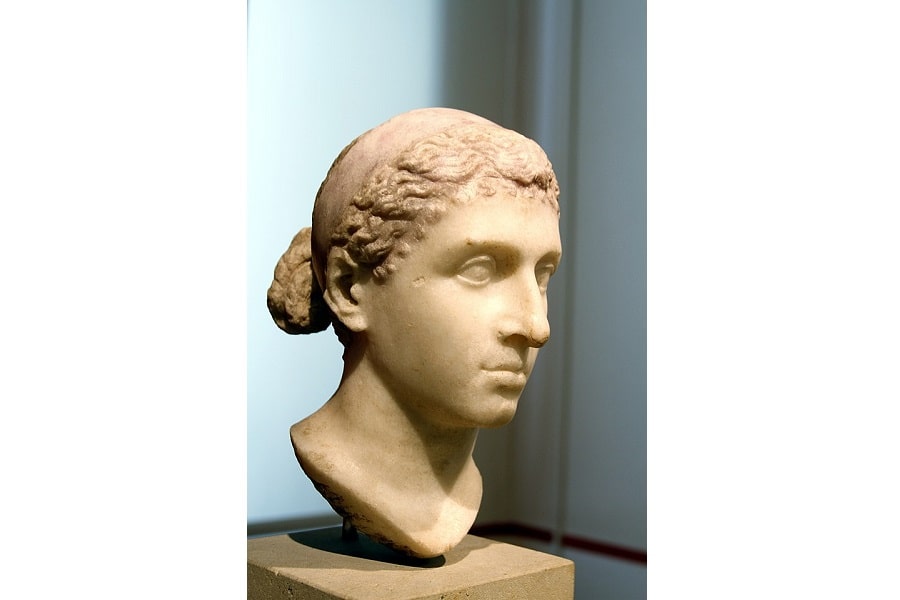
Cleopatra the VII was the last queen of Egypt and is undoubtedly one of the most famous female pharaohs to rule ancient Egypt. Although we know a lot about her life, we do not know much about her death, or more precisely, where she was laid to rest.
The final resting place of one of ancient history’s most fascinating characters is one of Ancient Egypt’s many mysteries. Cleopatra VII committed suicide after the death of her lover Marck Antony, who died by his own hand after the Battle of Actuim. Antony had falsely been informed that Cleopatra had perished in the battle.
READ MORE: How Did Cleopatra Die? Bitten by an Egyptian Cobra
Cleopatra was in fact alive, but sadly Antony was already dead when the information was corrected. The pair are believed to have been buried together, but where they were entombed remains one of the biggest ancient mysteries.
Some researchers have theorized that they were buried in Cleopatra’s capital of Alexandria, but that their tomb was lost when a tsunami swept through the city. Others believe their tomb remains undiscovered in the Nile Delta.
READ MORE: The Lighthouse of Alexandria: One of the Seven Wonders
Despite numerous investigations, Cleopatra’s tomb remains one of the most puzzling historical mysteries.
8. Paracas Candelabra
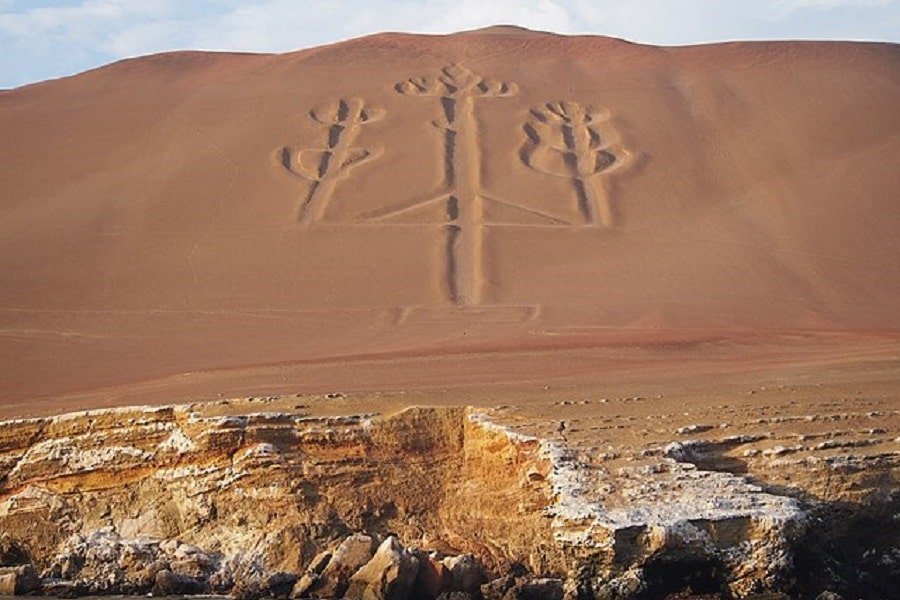
The Nazca Lines are not the only ancient mystery to be found etched into the Peruvian landscape, the Paracas Candelabra is another. The Paracas Candelabra is a huge geoglyph, measuring 600 ft tall, carved into a hillside not far from the mysterious lines.
Evidence found in the area surrounding the hillside shows that humans inhabited the site from roughly 200 BCE. However, researchers are unsure when the Paracas Candelabra was created, or why. Some theories suggest the Candelabra is the trident that belongs to the Incan god of creation, Viracocha, while others believe it was used for navigational purposes.
READ MORE: How Long Have Humans Existed?
9. The Justinian Plague
The Justinian Plague that swept through the Byzantine Empire and into the Near East in 541 CE was the first Old World plague pandemic. The disease killed millions of people and had a profound economic and social impact for years to come on the regions it affected.
The bacterium that caused the pandemic, bacterium Yersinia pestis, was recently confirmed to be the same one that caused the Black Death pandemic. The Black Death was a bubonic plague epidemic that swept through Europe and North Africa in the 1300s, killing hundreds of millions of people.
How the deadly bacteria entered the Byzantine Empire is one of the many ancient mysteries scientists are still trying to decipher. Researchers believe the bacteria may have entered Europe via rats that stowed away on ships traveling from Egypt.
However, recent investigations have found a relative of the ancient deadly strain in Kyrgyzstan, Kazakhstan. This suggests that the plague may have originated there, rather than in Egypt.
The plague continued to infect people for two centuries after the initial outbreak, making it one of the most deadly ancient mysteries.
10. Antikythera Mechanism
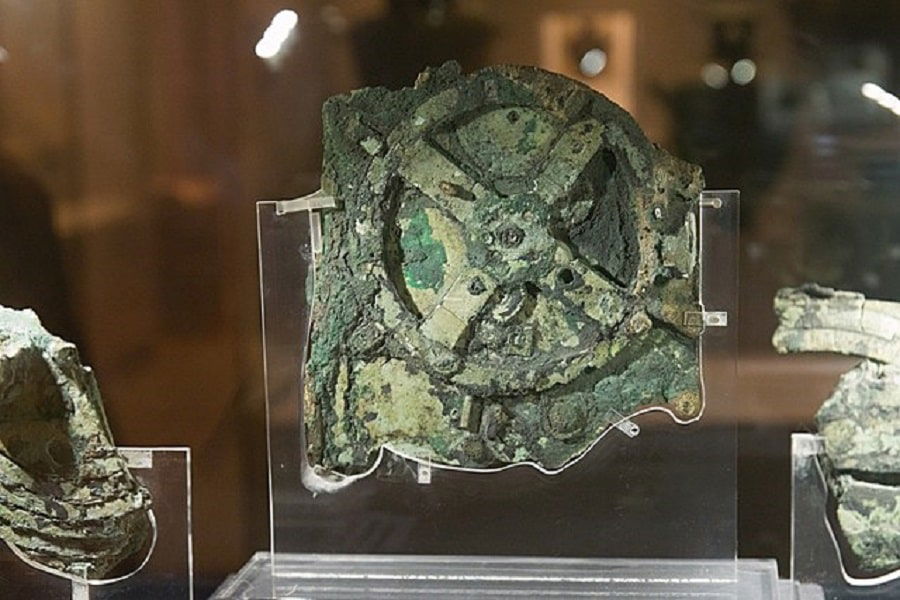
The Antikythera Mechanism is a 2,000-year-old artifact discovered in a shipwrecked Roman cargo ship off the coast of Antikythera in 1900. The artifact has been described as the first computer that was used to track the moon, sun, and the five classical planets. The device could predict their position years in advance, and track eclipses.
This sophisticated device consists of several bronze gears and was extremely advanced for its time; nothing of its kind appears in the historical record until the 14th century.
READ MORE: 15 Examples of Fascinating and Advanced Ancient Technology You Need To Check Out
It is believed to have been invented by ancient Greek scientists sometime between 87 BCE and 205 BCE.
The device is so sophisticated that initially, archaeologists believed it did not belong to the same period as the other items found in the Roman wreck.
As it was so advanced, theories began to circulate that it was aliens and not humans who invented the mechanism. Researchers believe that the origins of the mechanism were in Corinth, or Pergamon, rather than outer space.
No one can fully explain how the people in ancient Greece invented such an advanced instrument, and so for now, it will remain one of the top unsolved ancient mysteries.
What is the Oldest Mystery in the World?
The oldest mystery in the world predates recorded history and can be found in Eastern Turkey at Göbekli Tepe which translates to Potbelly Hill. First uncovered in the 1960s by German archaeologist Klaus Schmidt, the site is the oldest temple in the world, built in 10,000 BCE making it one of the oldest ancient mysteries uncovered to date.
The Ancient Mysteries within Göbekli Tepe

The site consists of 10ft tall pillars, each decorated with carvings of animals, such as snakes and lions, and abstract images, including what appears to be severed heads. Some researchers claim the carvings found on the temple walls at the site depict the scene of a comet hitting the Earth.
Göbekli Tepe changed our perception of ancient hunter-gatherer societies. This is because when the temple was constructed, it was previously believed that these societies did not practice organized religion.
The site is full of ancient mysteries, such as the way the people who built it transported extremely heavy stone pillars up the hill and situate them. The wheel was not yet invented when they carried out this mammoth feat.
Another mystery researchers are trying to find the answer to is what happened to the people who built and used the temple site. The site was abandoned in 8200 BCE for unknown reasons.